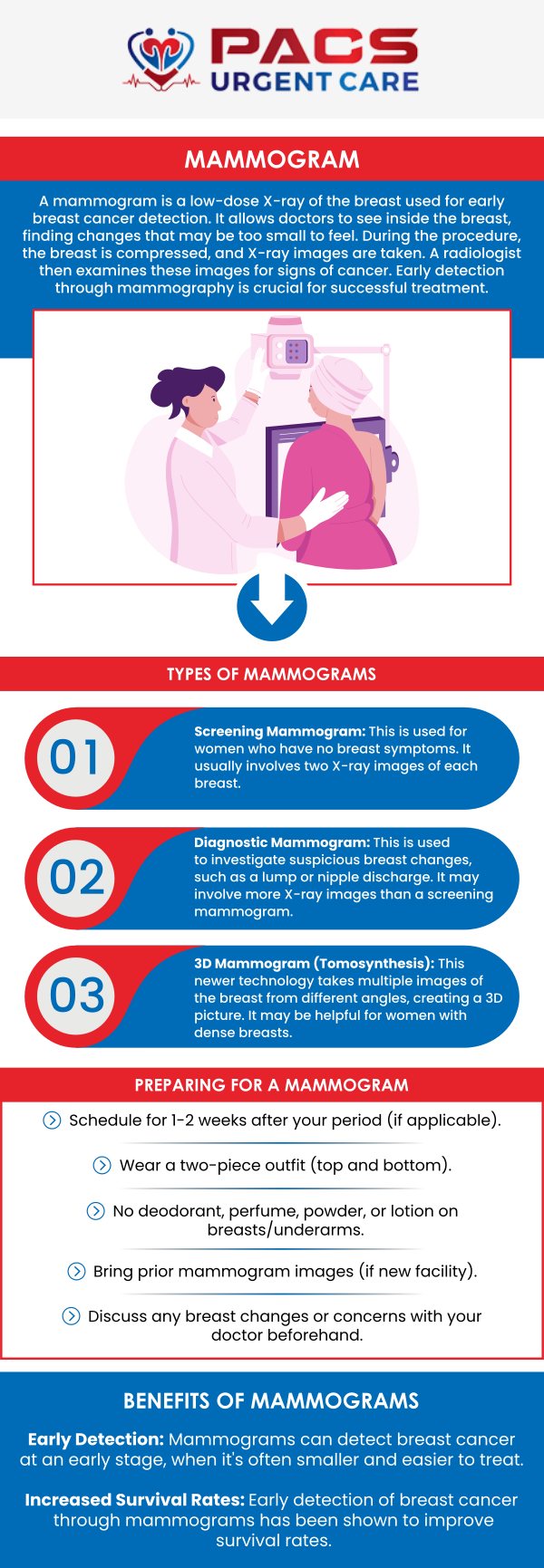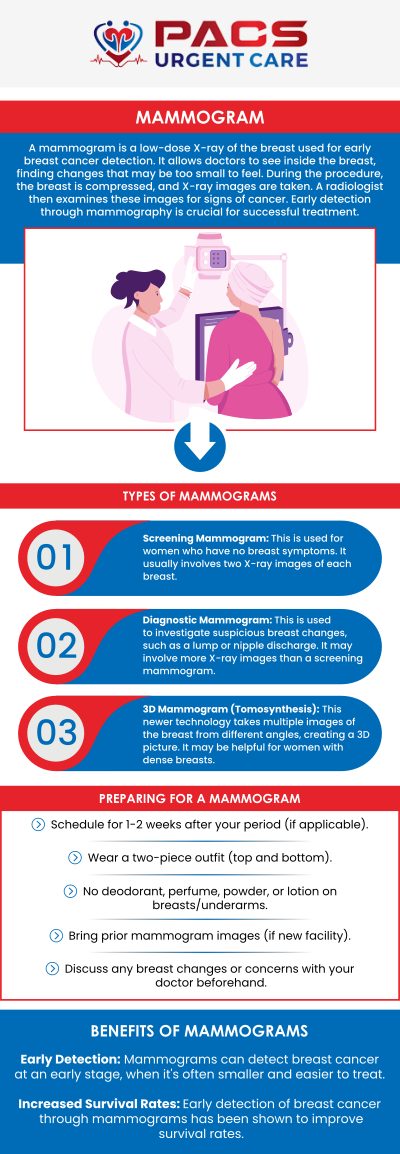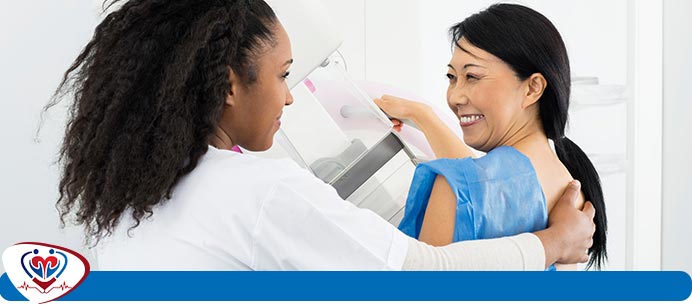Mammograms Q&A
A mammogram is an X-ray imaging technique used to detect breast cancer in women without any visible signs or symptoms. If you have a lump or feel pain in your breasts, you should immediately go for a mammogram screening. It will detect tumors and you will get treatment sooner than later. At Premier Acute Care Services, our medical professionals, Dr. Khaled Said MD and Dr. Walid Hammad offer mammograms. We have convenient locations to serve you in Alexandria VA, and Ruther Glen VA. For further guidance, contact us or book an appointment.




Table of Contents:
What does a mammogram detect?
At what age should a woman get a mammogram?
How often do you need mammograms?
What are the benefits of a mammogram?
A mammogram is a diagnostic imaging procedure that uses X-rays to detect breast cancer and other abnormalities in breast tissue. Mammograms are usually performed as part of a routine check-up after a woman reaches a certain age. The benefits of mammography include early detection of breast cancer, which may allow for more effective treatment. Mammograms are generally not recommended for women under the age of 50 unless otherwise recommended by a physician.
Mammograms are x-ray of the soft tissues of the breast that can detect a number of growths and abnormalities, such as breast cancer, but also:
• Calcifications — A calcification is a tiny fleck of calcium, about the size of a grain of salt, in the soft tissue of the breast. They can sometimes indicate the presence of an early breast cancer diagnosis. While calcifications are usually too small to be felt, they can be detected on a mammogram. Depending on their shape, size, and number, as well as how they are clustered, your doctor may want to do further tests. Big calcifications, also referred to as macrocalcifications, are usually not associated with cancer. Groups of small calcifications huddled together, called “clusters of microcalcifications,” are associated with extra breast cell activity. Most of the time this is non-cancerous extra cell growth, but sometimes clusters of microcalcifications can occur in areas of early cancer.
• Cysts — Unlike tumors, which are solid, cysts are fluid-filled masses that can occur in the breast and be detected by an x-ray. Cysts are very common and are rarely associated with cancer, although they may be related to another health condition.
• Fibroadenomas — Made up of normal breast cells, fibroadenomas are movable, solid, rounded lumps. While not cancerous, these lumps may grow. Any solid lump that is increasing in size is typically removed to make sure that it is not cancer. Fibroadenomas are the most common kind of breast mass, especially in females under the age of 30.
The age a woman should get a mammogram is dependent upon age and is based on the following guidelines:
• Women ages 40 to 44 — In their early forties, women may receive an annual mammogram and cancer screening check-ups if they wish to, but it is not always mandatory.
• Women ages 45 to 54 — Most women in this age group are encouraged to have their annual mammogram check-ups, especially if they have a family history of breast cancer.
• Women ages 55 and above — Women over the age of 55 may continue having their annual check-ups; however, they may also opt to change from annual screenings to mammogram check-ups every 2 years.
How often you should get a mammogram is specific to several factors, such as the risk of breast cancer, family history, lifestyle, age group, and more. The suggested frequency for mammograms by age range is outlined in the question above, but it is also important to note that your family history, such as if you have relatives that had breast cancer, and genetics, including a predisposition to increased breast cancer risk, play a significant role as well.
Mammography offers the image of the different soft tissues of the breast, which can help provide a clearer perspective in diagnoses as well as help in early detection. Modern mammography uses a lower radiation dosage, so there is an even lower risk involved (which was already incredibly low). A mammogram offers the following benefits:
• Detection of breast cancer
• Requires fewer additional tests
• Higher chance of diagnosing multiple tumors
• Improved accuracy in abnormality detection
The medical professionals at PACS Urgent Care can help you with all of your mammography-related needs, so you can better understand your health. Contact us today to book an appointment with our sprains and strains treatment specialist, or visit one of our two Virginia clinics; we have one in Ruther glen VA, and one in Alexandria VA. We look forward to serving you. We serve patients from Alexandria VA, Huntington VA, Arlington VA, Ruther Glen VA, Bagdad VA, Athens VA, Doswell VA, and surrounding areas.
Check Out Our 5 Star Reviews





